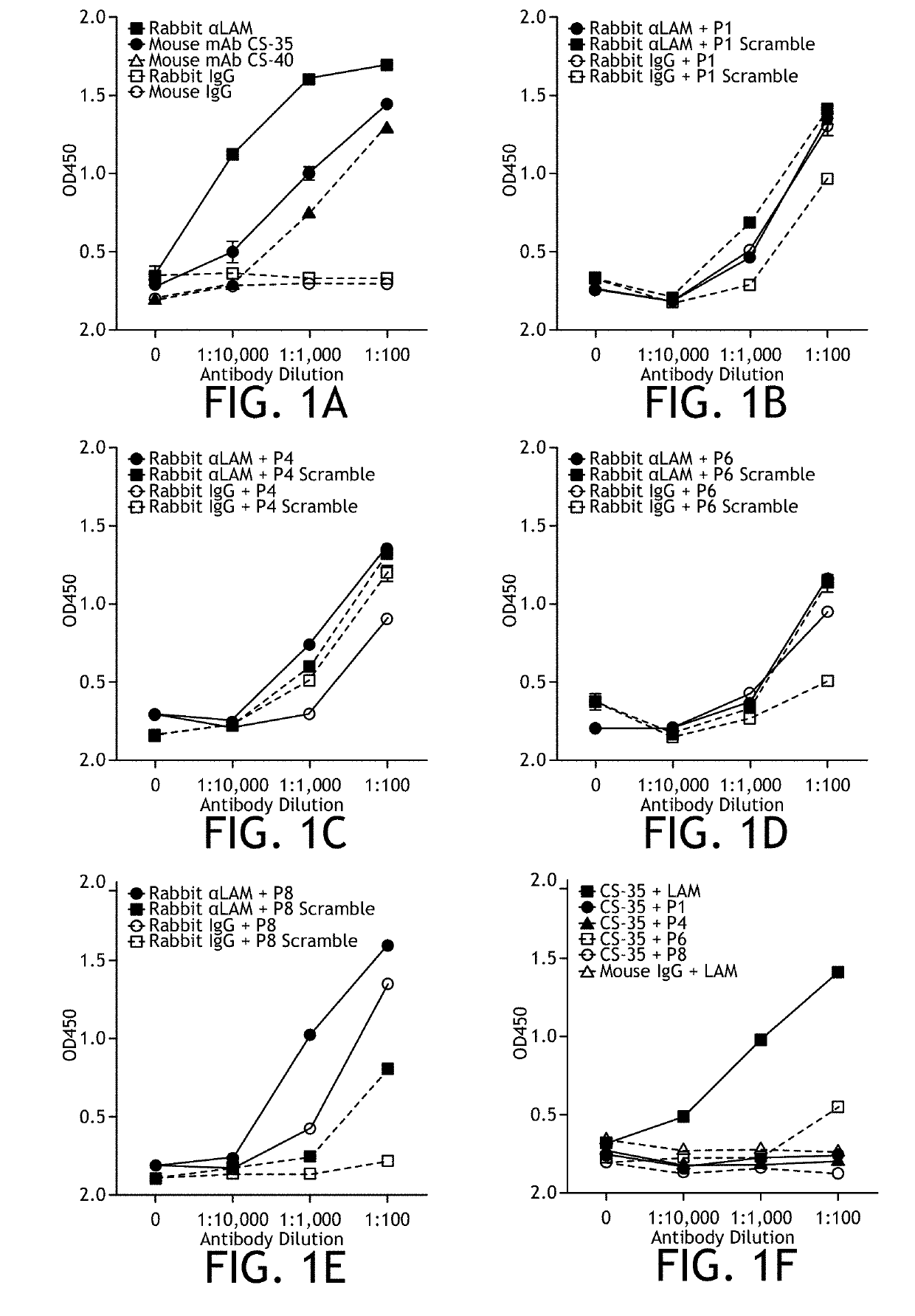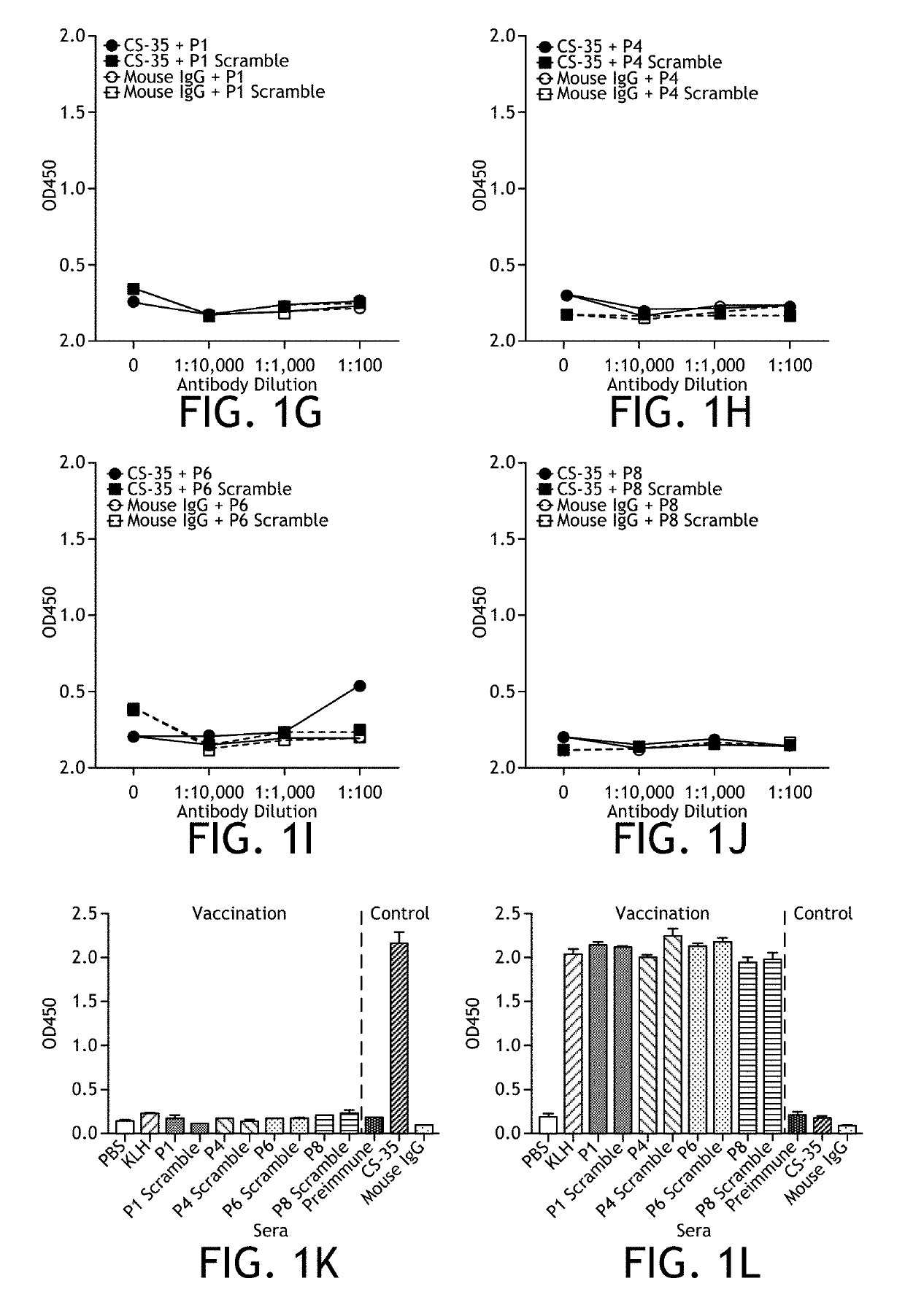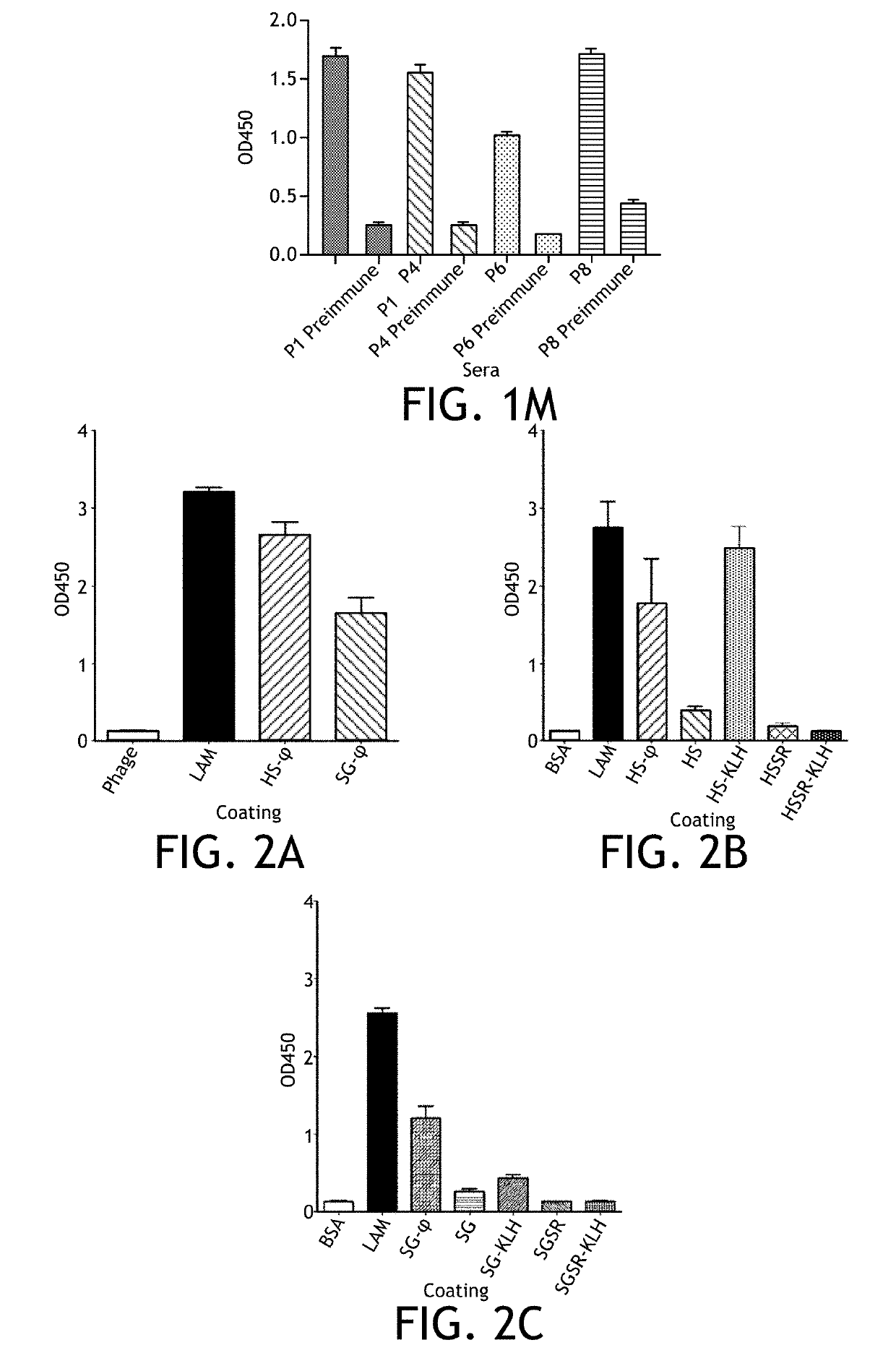Peptide mimotope that induces an immune response against mycobacterium tuberculosis lipoarabinomannan (LAM)
a technology of lipoarabinomannan and mimotope, which is applied in the field of peptide mimotope, can solve the problems of limited protection, lack of effective bcg vaccines, and major morbidity and mortality worldwide, and achieve the effect of maintaining the survival ra
- Summary
- Abstract
- Description
- Claims
- Application Information
AI Technical Summary
Benefits of technology
Problems solved by technology
Method used
Image
Examples
example 1
xisting Mimotopes In Vitro and in Mice
[0152]To test the ability of peptide mimotopes to induce an anti-LAM response and protect mice in vivo, either a rabbit polyclonal anti-LAM antibody or two mouse monoclonal anti-LAM antibodies (CS-35 and CS-40) were tested for their ability to bind LAM by ELISA (FIG. 1A). All three antibodies were able to bind LAM, though the rabbit polyclonal could bind at a lower titer compared to the two mouse monoclonal antibodies tested (FIG. 1A). Next 4 previously published peptides and their scrambled controls were synthesized (Table 1) (Gevorkian et al., 2005; Sharma et al., 2006; and Barenholz et al., 2007), conjugated to KLH and tested the ability of either the rabbit anti-LAM polyclonal antibody or the mouse monoclonal antibody CS-35 to bind the KLH-conjugated peptides in vitro by ELISA (FIG. 1B-J). Of the previously published peptides, only P8 could be specifically detected by the rabbit anti-LAM polyclonal antibody above control (FIG. 1E), and only ...
example 2
Phage Display Libraries with Anti-LAM Monoclonal Antibodies CS-35 and CS-40
[0153]Since monoclonal antibodies have defined epitope specificity compared to polyclonal antibodies, biopanning with the monoclonal antibodies rather than the polyclonal antibody was pursued. Five rounds of bio-panning of a 12-mer phage display library (NEB) were conducted independently, with either CS-35 or CS-40. As expected, the number of high-affinity phages recovered increased significantly over the course of the biopanning. After the fifth panning cycle, 10 randomly selected phages per antibody were sequenced. When biopanning with CS-40 mAb, 2 peptide motifs predominated: HSFKWLDSPRLR (hereafter called 232 HS peptide after the two N-terminal amino acids OR SEQ ID NO:1) accounted for 70% ( 7 / 10) of the sequenced phages, while SGVYKVAYDWQH (hereafter called SG peptide or SEQ ID NO:2) accounted for 30% ( 3 / 10). Biopanning with CS-35 mAb revealed the predominance of only 1 peptide motif, SGVYKVAYDWQH, whic...
example 3
ization of Mimotope Behavior of Identified Peptides
[0154]To determine if the putative mimotope peptides identified by biopanning using the mouse monoclonal antibodies can also be detected by LAM antibodies from another species, the ability of the rabbit polyclonal anti-LAM antibody to bind the putative mimotope peptides was tested. Thus, plates were coated with LAM alone as a positive control, HS-conjugated phage, SG-conjugated phage or phage alone and the magnitude of binding of the rabbit anti-LAM antibody was determined. Coating the plate with LAM yielded the greatest OD value (3.23), which was similar to coating with the HS phage (2.82) (FIG. 2A). Coating wells with an equivalent amount of SG-conjugated phage yielded the lowest response (OD 1.56).
[0155]The ability of the rabbit anti-LAM polyclonal antibody to recognize the mimotope peptides under a variety of conditions was compared. Thus, plates were coated with LAM as a positive control or HS peptide alone, HS peptide displaye...
PUM
| Property | Measurement | Unit |
|---|---|---|
| Fraction | aaaaa | aaaaa |
| Composition | aaaaa | aaaaa |
| Immunogenicity | aaaaa | aaaaa |
Abstract
Description
Claims
Application Information
 Login to View More
Login to View More - R&D
- Intellectual Property
- Life Sciences
- Materials
- Tech Scout
- Unparalleled Data Quality
- Higher Quality Content
- 60% Fewer Hallucinations
Browse by: Latest US Patents, China's latest patents, Technical Efficacy Thesaurus, Application Domain, Technology Topic, Popular Technical Reports.
© 2025 PatSnap. All rights reserved.Legal|Privacy policy|Modern Slavery Act Transparency Statement|Sitemap|About US| Contact US: help@patsnap.com



